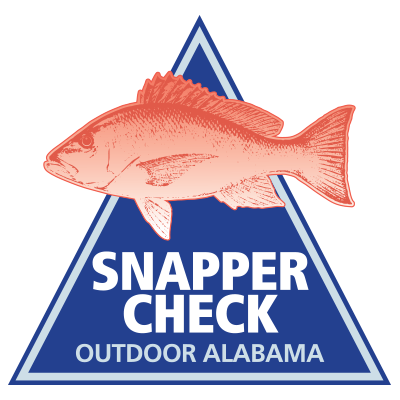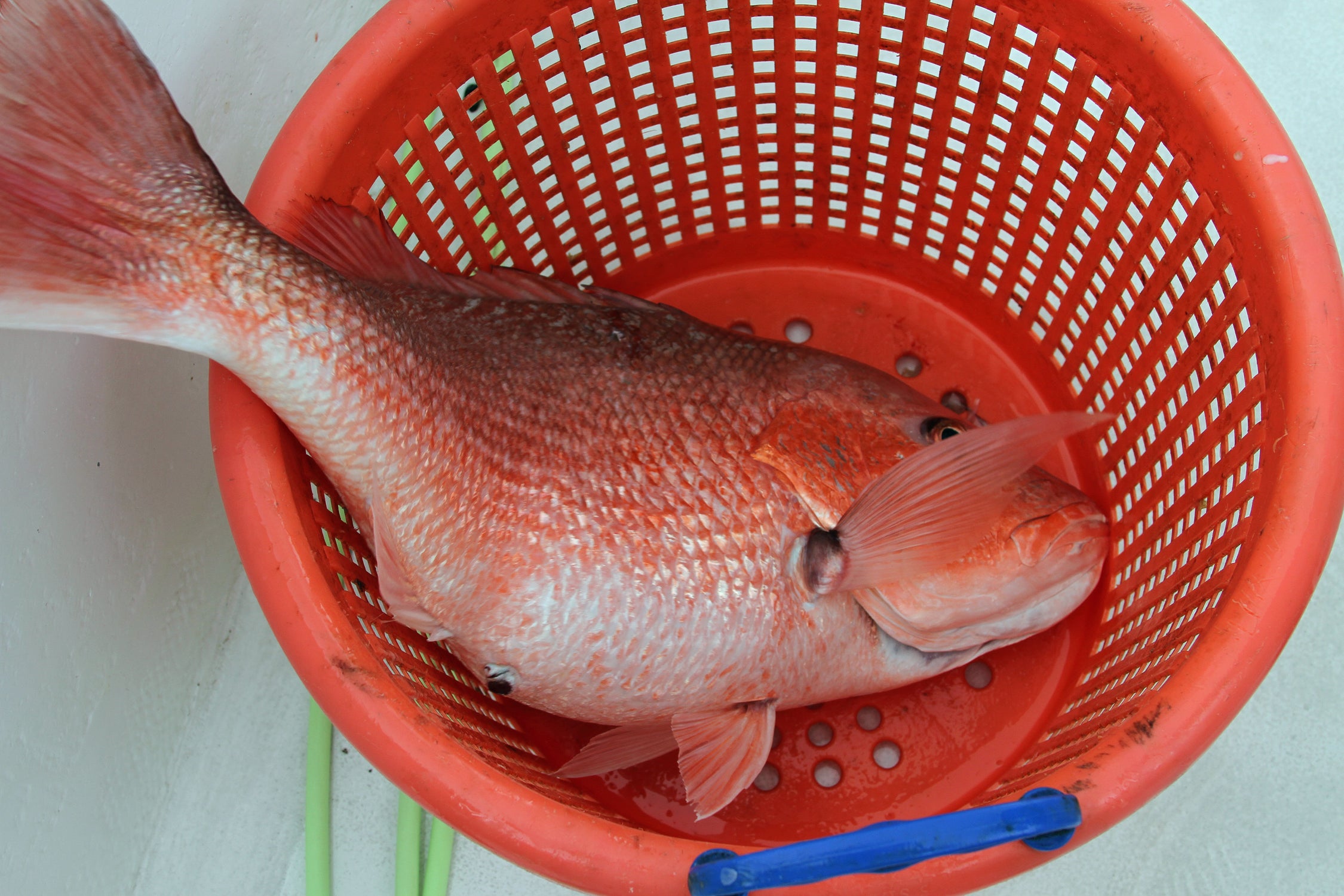By DAVID RAINER, Alabama Department of Conservation and Natural Resources
Preliminary numbers from the Alabama Red Snapper Reporting System, aka Snapper Check, indicate the fear that Alabama anglers would exceed the 2017 quota were unfounded.

By DAVID RAINER, Alabama Department of Conservation and Natural Resources
Preliminary numbers from the Alabama Red Snapper Reporting System, aka Snapper Check, indicate the fear that Alabama anglers would exceed the 2017 quota were unfounded.
“Using the Alabama Snapper Check numbers, we’re going to be well within the historic allocation for Alabama, so the 39-day season did not put us over, which was a concern for the commercial fishing community and part of the charter fishing community,” said Scott Bannon, Acting Director of the Alabama Marine Resources Division (MRD). “Now the concern we have is what the MRIP (Marine Recreational Information Program) numbers will show, and those numbers are not out yet.”
Since the inception of the Alabama Snapper Check program, the federally produced MRIP numbers for red snapper caught by private recreational anglers have consistently overestimated the snapper harvest, according to MRD officials. The federal survey overestimated harvest numbers by 81 percent in 2014, 68 percent in 2015 and 79 percent in 2016 compared to Snapper Check numbers.
Kevin Anson, MRD’s Chief Biologist who sits on the Gulf of Mexico Fishery Management Council as a proxy member, said MRD has confidence in the Snapper Check data. Alabama has worked hand in hand with NOAA Fisheries staff and their consultants in the development of the Snapper Check system. They anticipate that the program will be approved for use in the management process by year end.
The 2017 total catch per Snapper Check indicated the charter industry (not including headboats) and private recreational anglers landed 1,649,242 pounds of red snapper. Anson said that total breaks down to 790,382 pounds for the charter-for-hire industry and 858,860 pounds for the private recreational anglers.
The Gulf-wide red snapper quota for 2017 for the recreational sector was 6,603,094 pounds. Historically, Alabama lands between 30 and 35 percent of the total snapper catch in the Gulf because of its unparalleled artificial reef program.
Anson said the Gulf Council, which is meeting this week in Biloxi, Miss., has previously discussed a regional management plan for reef fish through Amendment 39. If Amendment 39 were approved, Alabama would receive 31.6 percent of the total quota, which would have been a little more than 2 million pounds this year.
In mid-June this year, NOAA Fisheries extended the federal season from June 1-3 to an additional 39 weekend and holiday days when states agreed to limit or eliminate state season days.

Although the 2017 federal season was over three times longer than the 2016 federal season (11 days), the number of fishing trips with red snapper did not increase at the same amount. Private recreational anglers took an estimated 79,176 snapper trips during the 2017 39-day federal season, according to Anson. During the 2016 federal season, the total number of private recreational trips was estimated to be 35,191.
“Yes, there were more angler trips in 2017, but these trips did not have the same level of angler harvest rates or the same size of fish,” Anson said. “We had smaller fish landed in 2017 versus 2016. This year’s numbers showed an average of 1.7 harvested fish (2-fish limit) per angler. We felt a lot of that was people were going the shortest distance from shore where they felt they could get fish they wanted to keep. If they didn’t want to get the maximum limit and were fine with a 5-pound fish, they went 8 to 10 miles. They just went fishing instead of catching. We think that’s the way the fishery has morphed in the last few years.”
In addition, Anson said with the closure of gray triggerfish and greater amberjack during the federal season for the past couple of years the majority of anglers have shifted to fishing closer to shore.
“Snapper Check indicated that 90 percent of the red snapper were harvested within 120 feet of water, which is about 17-18 miles from shore,” he said.
Meanwhile, Bannon said Louisiana has a reporting system similar to Snapper Check, and the Louisiana numbers indicate the Bayou State came in about 100,000 pounds under its quota. Louisiana is considering a fall season to catch the additional fish, but Alabama is not.
“We had an agreement that we would not have a fall season if we got the 39-day season during the summer,” Bannon said. “We’re going to stick to that agreement.
“We just wanted to show when you extend the season, it allows for greater access, and it reduces fishing pressure. The charter fishermen said they also noticed a reduction in the private boats out fishing.”
Bannon said the reduced fishing effort contributed to less chaos in the artificial reef areas and helped with the boat-ramp traffic jams, especially at Dauphin Island’s Billy Goat Hole.

“The extended opportunity allowed people to plan around vacations and family activities,” Bannon said. “The kids might have a soccer game or baseball game or the weather might be bad. With short seasons, people have a tendency to go snapper fishing in weather conditions that are not good.
“When you extend the season, it allows life to happen for folks. Now people can look at the weather and decide to go when the weather is better.”
Bannon said the Snapper Check numbers show that the states have the ability to monitor and manage the reef fish fishery, and that is what the general public wants.
“People want the season to be spread out over a longer period of time to give them some options,” he said. “During those short seasons, tensions get high. At our public access boat ramps, parking is very limited. People get frustrated with that. When you only have a couple of days to fish, you can’t even find a place to park.
“The extended season helps people make better decisions, especially based on the weather. And I think it also shows that if we get to a state management plan through Congress or the Gulf Council, we have the ability to monitor what our catch rates are throughout the season. Every week we were looking at Snapper Check numbers, and we felt the whole time we were fine; we were not going over the allocation if we use Snapper Check data.”
Former MRD Director Chris Blankenship, now the Commissioner of the Alabama Department of Conservation and Natural Resources, has said on several occasions that Alabama feels much more confident in the integrity of the Alabama Snapper Check data compared to MRIP.
“We were glad when we got our preliminary numbers from Snapper Check,” Blankenship said. “This is exactly what we thought would happen when they extended the season. We felt like the more days people could fish, the effort would spread out over the season. They could go when it was good for them and their family and not have to go every single day it was open.
“It kept the catch rates per day at a good level, and this is exactly what we thought would happen. We’ve been doing this a long time. We talked with fishermen to see what the seasons and effort were like when we had between 30 and 40 days to fish. We felt with more opportunity, the number of fishing trips per day would be less, and that’s exactly what we saw.”